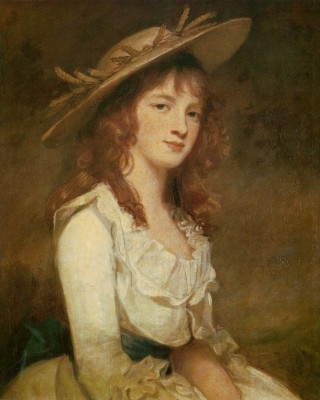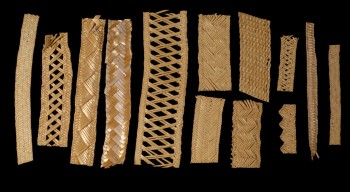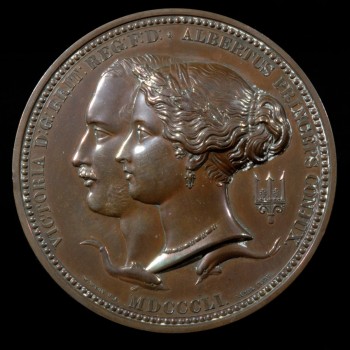
The Napoleonic Wars disrupted the imports of Italian plaited goods and gave the home market a chance to flourish. In Britain the straw plaiting industry centred in Luton and Dunstable, but straw plaiting became established as a cottage industry wherever good quality straw could be grown.
In Orkney the straw plait industry found a workforce already adept at working with straw. Ripened split wheat straw was first used but was found to be too brittle so it was replaced with un-split rye straw, which made a superior quality plait. In 1804 a company of London bonnet makers called ‘Larking’ introduced straw plaiting to Orkney.
As trade flourished, other companies from south were attracted by local skills, hard workers and cheap labour. Kirkwall merchants, Mr Ramsay became agents for Messer’s Muir of Greenock, and Mr Robert Borwick, exported to London from 1807. Mr Heddle from Quildon and Mr James Sutherland also acted as agents for exporting straw plait.
Plaiting could be a sociable activity, employing 30 to 40 young women in one workshop, the hands were busy but conversations could flow. They earned their wage on a piecemeal basis, depending of the quantity and quality of work produced. These workshops became a gathering place for many of the young men of the town, keen to distract the young women from earning an honest crust.
The freedom of this social opportunity would have been great fun for the majority of the young people involved but led to unwelcome gossip. The morals and reputation of the plait girls became a matter for concern. Due to this, the workshops were disbanded and straw plaiting became a cottage industry, moving to the chaumer, which was part of the steedeen, or outbuildings, of the croft.
Here the young women of the parish could congregate and work together under the watchful eye of a parent. The chaumer became a popular meeting place in the parish where gossip and stories could be swapped on a cold winters night
At first the rye straw was imported from England, but after a successful experiment in growing rye straw by W.G.T. Watt of Skaill, landowners throughout Orkney decided to grow it for use in the local straw plait industry.
At its height, the plait industry employed up to 7000 women in Orkney and took an estimated £30,000 into the economy. Payment related to the fineness of the straw and the quality of the workmanship. An average daily wage in1841 would have been 6 pennies. The completed plaits were washed and put through rollers to flatten them before being passed onto other girls who would sew them into bonnets. This was normally done out-with Orkney.
Plaits were normally named for the number of straws used. One of the narrowest was called ‘sevens’ another was called ‘elevens’ or even ‘thirty-twos’.

Mrs J Rendall of Stromness won a bronze medal at the Great Exhibition held at the Crystal Palace in 1851 for her straw plait samples. The Great Exhibition was set up to glorify British manufacture, over half the 100,000 exhibits were from Britain or the British Empire and over 6 million people attended.

By the middle of the 19th century straw plaiting was in decline. Prices paid for straw plait were affected by cheaper imports from China and Japan. It is widely believed that the fashion for straw bonnets was dealt a fatal blow by Queen Victoria. On being presented with a straw bonnet, then the height of fashion, she laughed and put it on the head of her pet dog.





